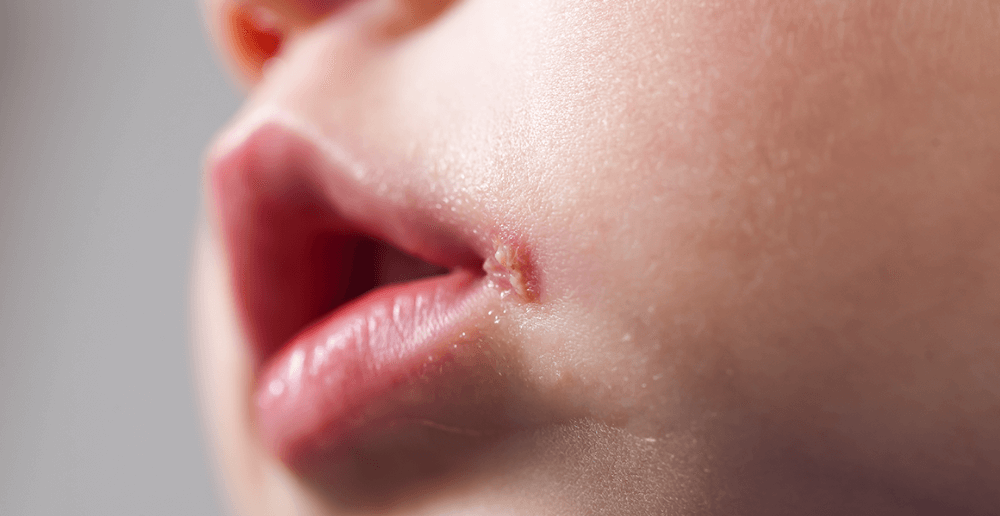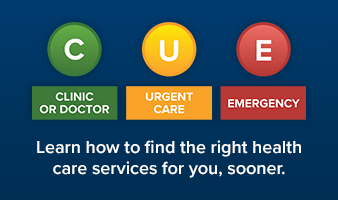Cold sores
What you need to know

By Diana Doyle-Zebrun
Winnipeg Regional Health Authority
Published Friday, January 11, 2019
Lesions, ulcers, blisters, sores.
Whatever you want to call them, it goes without saying that no parent wants to see one on their child’s mouth.
Of course, not all sores are created equal. Some are caused by a mild irritation or allergy and are relatively easy to cope with. Others may be caused by a viral infection and will require more careful management. Cold sores fall into the latter category.
A cold sore starts out as a reddish bump on the outer lip before turning into a blister. They appear on one side of the mouth in a cluster. Your child may feel a tingling or burning before the sores become visible. Once it appears, it will last for up to 10 days before it ruptures, leaking a clear fluid. Eventually, it will scab over and dry up, leaving no lasting marks or scars.
Unlike other types of sores found in or around the mouth, cold sores are caused by the herpes simplex virus. There is no cure for this virus, which means that once a person is infected, the virus stays in the body, allowing cold sores to flare up at any time.
The virus itself spreads easily. children can pick it up if they have close physical contact (kissing) or share toys, eating utensils or a drinking glass with an infected person. It can spread from using makeup from someone who is infected. And while the virus is most contagious when the lesion is open and not crusted over, it can also spread when it is invisible, because some infected people have the virus in their saliva.
While anyone exposed to the herpes simplex virus may be at risk for developing cold sores, not everyone will. In fact, it is estimated that while 50 to 80 per cent of North American adults have the virus, only 20 per cent of adults actually get cold sores.
For those who do get cold sores, outbreaks will vary in frequency and severity, and can be triggered by any number of things, including sunburn, fever, injury from dental procedures, and stress or fatigue. Such occurrences will usually be preceded by an itchy feeling or a tingling sensation around the mouth.
Cold sores can be successfully managed. For example, you can reduce redness and swelling by placing a cool, wet towel on sores for 20 minutes, three times a day. It may also be helpful to avoid feeding your child certain acidic foods like citrus fruits and tomatoes when sores are open and painful. If started early, treatment with antiviral pills can shorten the course of a cold sore by many days. Cold sore ointment, ice or acetaminophen or ibuprofen may decrease the pain and discomfort associated with a cold sore, but they will not shorten the time the lesion is present. Antiviral medications may also be prescribed to lessen discomfort.
If you suspect your child has a cold sore, take them to see a health-care provider. He or she will be able to conduct an examination and run tests to determine whether the blisters on your child’s mouth are cold sores or a different type of lesion. This could be important for determining future care and treatment options.
While there is no cure for cold sores, there are things you can do to reduce occurrences and prevent spreading of cold sores in children:
- Encourage frequent handwashing when there are visible sores, but always before touching food or your mouth or eyes.
- Try to stop your child from touching their eyes.
- Do not let children share toys that other children may have put in their mouths.
- Use a disinfectant to clean toys every now and then.
- Ensure children with open or weeping sores are kept home until their blisters scab over.
- Use a cotton swab to apply ointment to a child’s cold sore. Make sure you wear rubber gloves when applying the ointment and wash your hands afterwards.
While there is no doubt that cold sores can pose certain problems, it is important to remember that they are entirely manageable. By following the steps above, you can reduce your child’s risk of developing cold sores, or limit the discomfort they may cause.
Diana Doyle-Zebrun is Clinical and Quality Initiatives Co-ordinator at Health Links – Info Santé, a telephone health information service with the Provincial Health Contact Centre at Misericordia Health Centre. If you have health questions, call 204-788-8200 or toll-free 1-888-315-9257.

